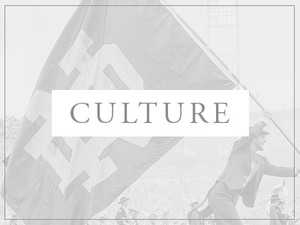 "
"
As the inaugural speaker for the Klau Center’s “Building an Antiracist Vocabulary” lecture series, Archbishop Wilton Gregory spoke virtually to the Notre Dame community last Friday about the Church’s duty and role in fighting racism, a duty that it’s been especially called to undertake in recent months in light of George Floyd’s death.
As the sole African American archbishop in the country today, Gregory has distinguished himself among his predecessors and peers by publicly speaking out against President Trump on several occasions, including the president’s recent and controversial trip to St. John Paul the II National Shrine, which Gregory criticized as “baffling and reprehensible.” His lecture, “Antiracism as a Moral Imperative,” focused on tracing the history of the Church’s involvement in the civil rights movement, bringing us to the present moment’s urgent need for healing the sins of racism, including “those which may still lodge in the heart of the Church.”
In the Archbishop’s view, openly confronting the Church’s historical tensions with racism is a prerequisite to reconciling the legacy of slavery with the current systemic racism woven into the fabric of our country: “There is an underbelly to the Church’s involvement in racism and slavery and we have to own that, we have to own the past.” For instance, American Catholic Bishops, prior to and during the Civil War era, were silent in condemning slavery. The decision, according to Gregory, was based “in fear” regarding the country’s divisions over the issue.
Continuing on into the Reconstruction era, Archbishop Martin Spalding wrote in 1866 that the freed slaves were “unfortunate beings” whose future status “is our most urgent duty to discuss.” Nevertheless, the language of the message did not yet categorize racism itself as a sin, which undoubtedly inhibited the Church from welcoming African Americans into the faith.
As the nation moved deeper into the 20th century and the issues of segregation and civil liberties surged to the forefront, the Church’s leaders became increasingly vocal in their support of integration, culminating in the 1968 National Race Crisis letter, written by the United States Catholic Bishops.
“There is no place for complacency and inertia [for racial justice]. The hour is late and the need is critical,” it reads. But it was the landmark 1979 ‘Brothers and Sisters to Us” pastoral letter which powerfully challenged the Church itself, insisting that “the structures of our society are subtly racist,” and that “the sin is social in nature in that each of us, in varying degrees, is responsible.”
The letter also confronts the fact that to many, the Church has “all too often been a white church, a racist institution.”
Students who attended the lecture, which was moderated by Dory Mitros Durham, associate director of the Klau Center, wrote in questions, one of which was whether church leaders today are doing enough for racial justice.
“In short? No,” Gregory chuckled in response.
He called for individual moral courage, and he emphasized the need to “listen and know the stories of our fellow brothers and sisters.”
What if, some students asked, Church leaders feel that voicing messages of racial justice is too political or divisive?
“I advise a young person to have the courage to say: ‘I don’t feel that way,’ and to challenge the clergy and parish leaders,” said Gregory. “Our young people are a lot more courageous than we give them credit for,” he Added.
Rev. John I. Jenkins, C.S.C. recently made a statement detailing new efforts by the administration to further diversity, equity and inclusion by establishing the Diversity, Equity and Inclusion Task Force, in addition to consulting student leaders, faculty and staff on initiatives and measures to increase diversity and cultural awareness on campus. The question of racial justice, framed as a Catholic moral imperative by Gregory, will be put to the test in the following years at Notre Dame.